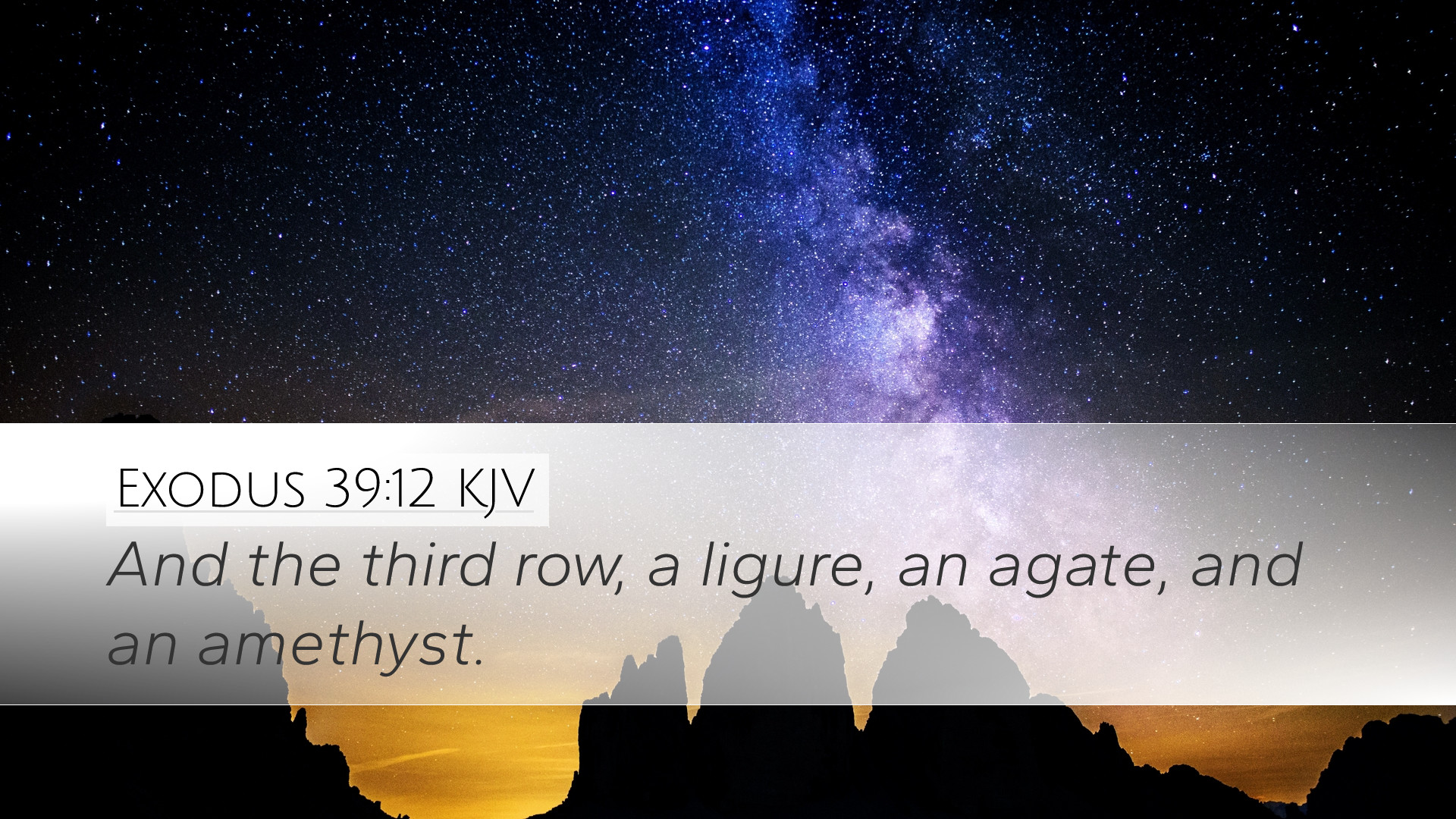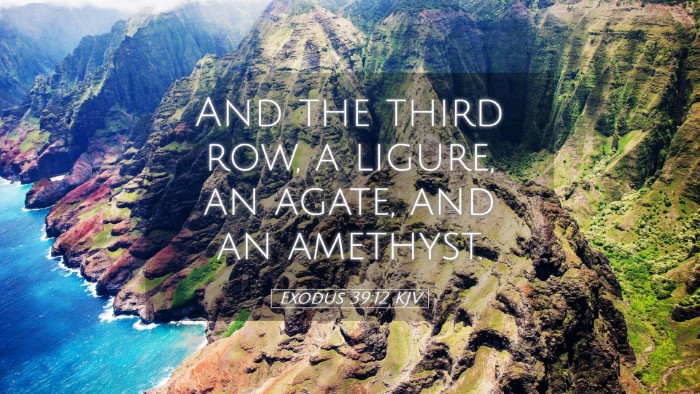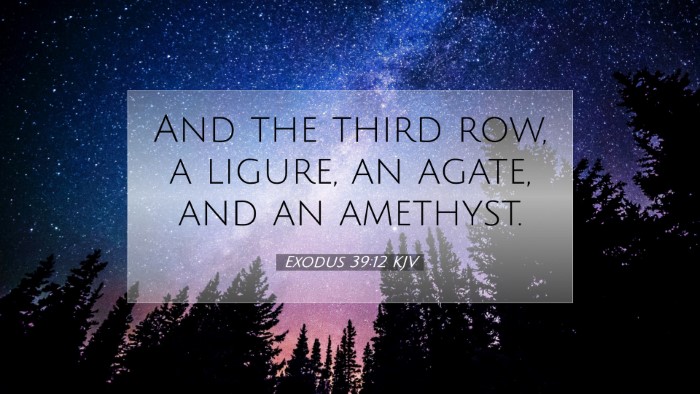Commentary on Exodus 39:12
Exodus 39:12 states:
"And the second row was a turquoise, a sapphire, and a diamond."
Overview
The verse is part of the detailed description of the high priest's garments, specifically the Breastplate of Judgment, which contains twelve stones representing the twelve tribes of Israel. This verse invites significant theological reflection and interpretation regarding the symbolism of the materials, their arrangement, and their meaning in the context of Israel's worship and covenant relationship with God.
Significance of the High Priest's Garment
- The Role of the High Priest: The high priest served as a mediator between God and the people, and the garments, including the breastplate, symbolized his sacred responsibilities.
- Visual Appeal as Representation: The vivid colors and precious stones were not just decorative but served to reflect the glory and majesty of God before the people.
Symbolism of the Stones
In examining the specific stones mentioned:
- Turquoise: Often associated with peace and protection; it symbolizes the divine presence among the people.
- Sapphire: Noted for its deep blue color, sapphire is a stone of royalty and heaven, representing the covenant between God and Israel.
- Diamond: A symbol of strength and permanence, reinforcing the idea of God's everlasting covenant and fidelity.
Historical Context
Matthew Henry notes that the high priest’s garments were prescribed with meticulous detail to reflect both aesthetic beauty and profound spiritual truths. The representation of the twelve tribes by precious stones signifies Israel’s special status as God’s chosen people.
Albert Barnes highlights that the arrangement and specific selection of these stones were intentional, providing insight into how each tribe was to be represented before God, thereby fostering a sense of unity and collective identity among the tribes.
Spiritual Implications
Every aspect of the high priest's garment points to Christ, our ultimate High Priest. Adam Clarke expounds on how the Old Testament priesthood and its ceremonial duties were types and shadows that foreshadow the perfect mediation of Jesus. In this light, the stones not only represent the tribes but also allude to the beauty of the church, made up of diverse individuals coming together in Christ.
Theological Reflections
The passage can prompt rich theological discussions about:
- Covenantal Relationships: How God’s promises are intricately woven into the fabric of Israelite identity and worship.
- Divine Presence: Understanding how the visual elements of worship facilitate encounters with the sacred and promote communal identity.
- Sacred Mediatorship: Reflecting on the nature of Christ’s mediatorship and its implications for believers today, encouraging pastors and theologians to explore the continuity of priestly roles from the Old to the New Testament.
Application for Contemporary Believers
This verse serves as a reminder for believers to continuously contemplate their identity in Christ as part of the spiritual priesthood. The beautiful symbolism in the high priest’s garments encourages believers to approach God with reverence and to celebrate the diversity within the body of Christ as each member has unique roles and gifts.
Conclusion
Exodus 39:12 encapsulates the beauty and significance of the high priest's garments, inviting deep reflection on God's covenant relationship with His people. The vibrant representation of the tribes through precious stones not only reflects God's divine glory but also foreshadows the ultimate sacrificial role of Jesus Christ. Pastors and scholars are encouraged to delve into this verse, unveiling layers of meaning that speak to both ancient and contemporary contexts of faith.


